Artificial snow saves Olympics and Alpine ski resorts
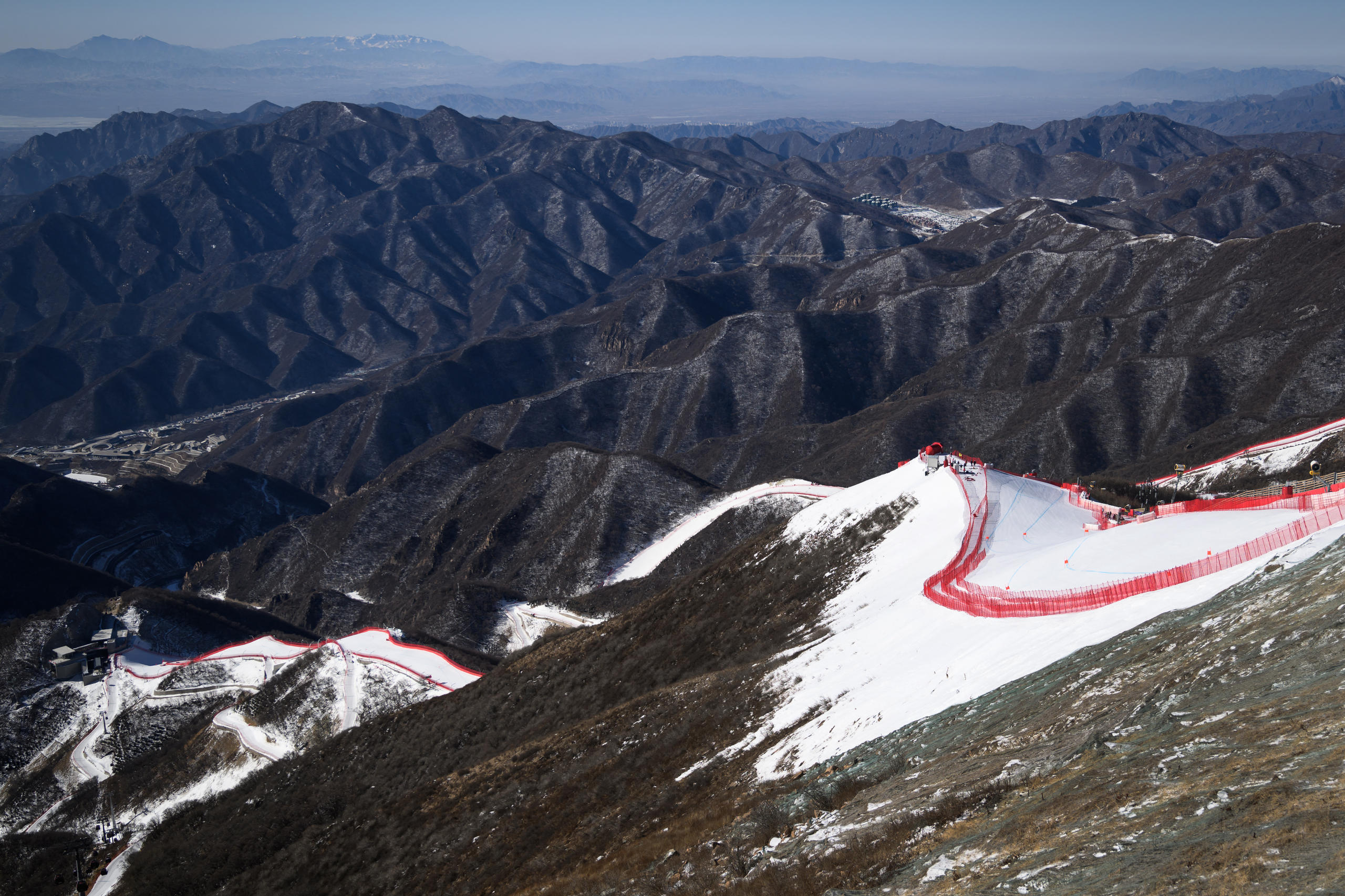
The artificial snow used for the Beijing Winter Olympics is stirring fierce debate over its environmental toll. Yet without it, many ski resorts in Switzerland and around the world would be unable to survive. Here is your guide to artificial snow.
This year’s Winter Olympics were supposed to be the first “green” Games ever, with a net zero emissions balance. Such was the promise made by the Beijing 2022 Organising Committee, which announced that the Olympic facilities would be 100% powered by renewable energies.
However, some environmental associations along with many of the spectators who watched the skiing races, are questioning how sustainable the Games in China are. If the Swiss champions Beat Feuz, Lara Gut-Behrami, Corinne Suter and Marco Odermatt were able to win gold medals, it was only because around 200 snow cannon were activated in the Yanqing ski area, some 80 kilometres northwest of Beijing, the Chinese capital. Without artificial snow, the Olympics could not have taken place.
How is artificial snow made?
Water is mixed with compressed air and atomised into fine droplets. On contact with the air, the droplets turn into ice crystals before hitting the ground. Modern snow cannon can work at temperatures that are only just below freezing. At higher temperatures, chemical additives must be used to help the water crystallise.
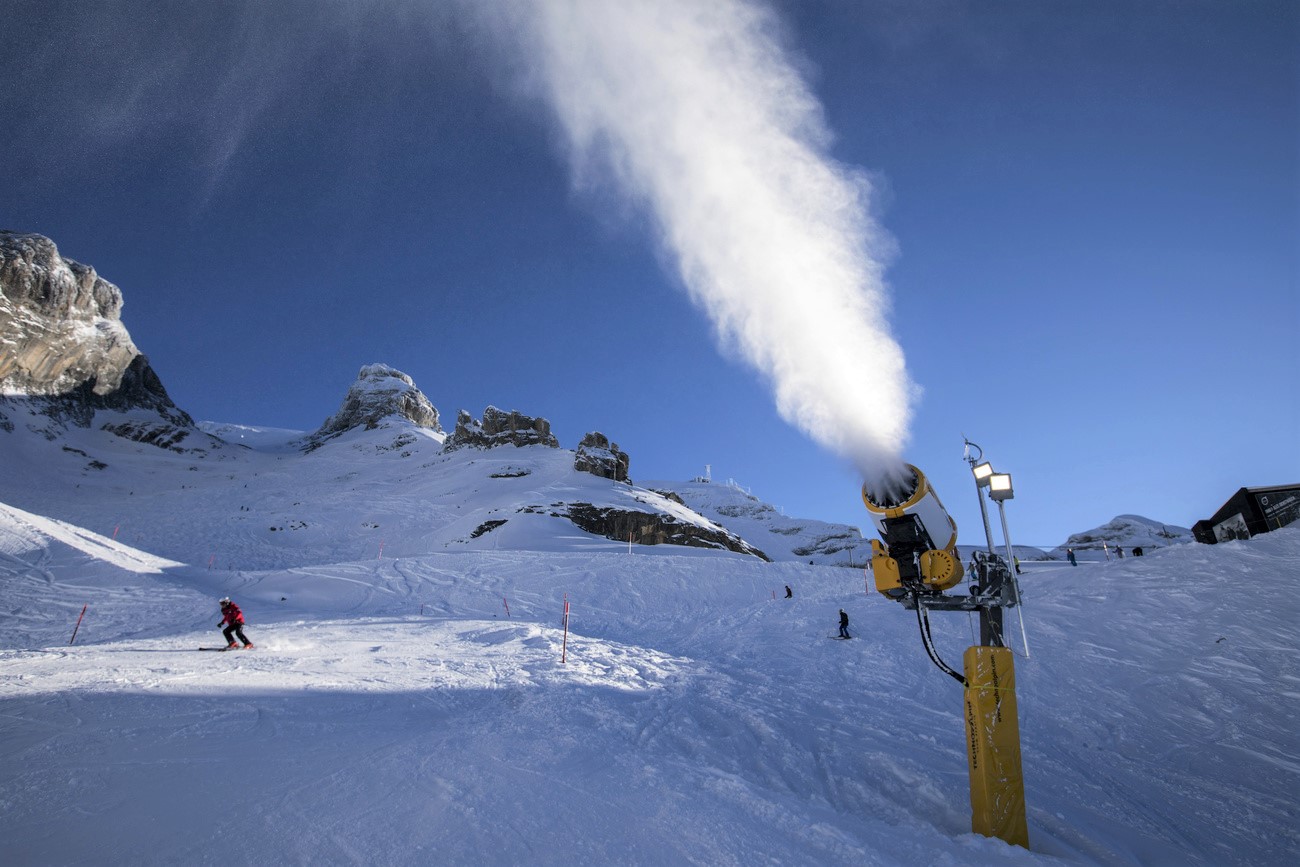
What is the difference between machine-made and natural snow?
Both consist exclusively of air and water and are formed according to the same principle. However, because of the lower drop height, artificial snow has a different crystal structure – “grains” rather than hexagonal stars – and the flakes are denser. Artificial snow melts more slowly and makes the skiing surfaces harder and icier, and therefore faster.
How much artificial snow is used in the Alps?
As a result of global warming and decreasing snowfall, artificial snow is now essential for most Swiss ski resorts, according to Fabian Wolfsperger of the WSL Institute for Snow and Avalanche Research.
Machine-made snow has been used in Switzerland since 1978. Savognin, in canton Graubünden, was one of the first ski resorts to do so.
During the winter of 2020-2021, 53% of ski slopes in the Swiss Alps were artificially covered with snow, according to data from the Cableways Association of Switzerland. The proportion is higher in Italy (South Tyrol) and Austria, while Germany (Bavaria) and France use artificial snow across a relatively smaller area.
How much water is needed to make artificial snow?
It takes about one cubic metre, or 1,000 litres, of water to produce two cubic metres of artificial snow. Carmen de Jong, professor of hydrology at the University of Strasbourg, estimates that 2.5 billion litres of water were needed to make the snow for the Beijing Games.
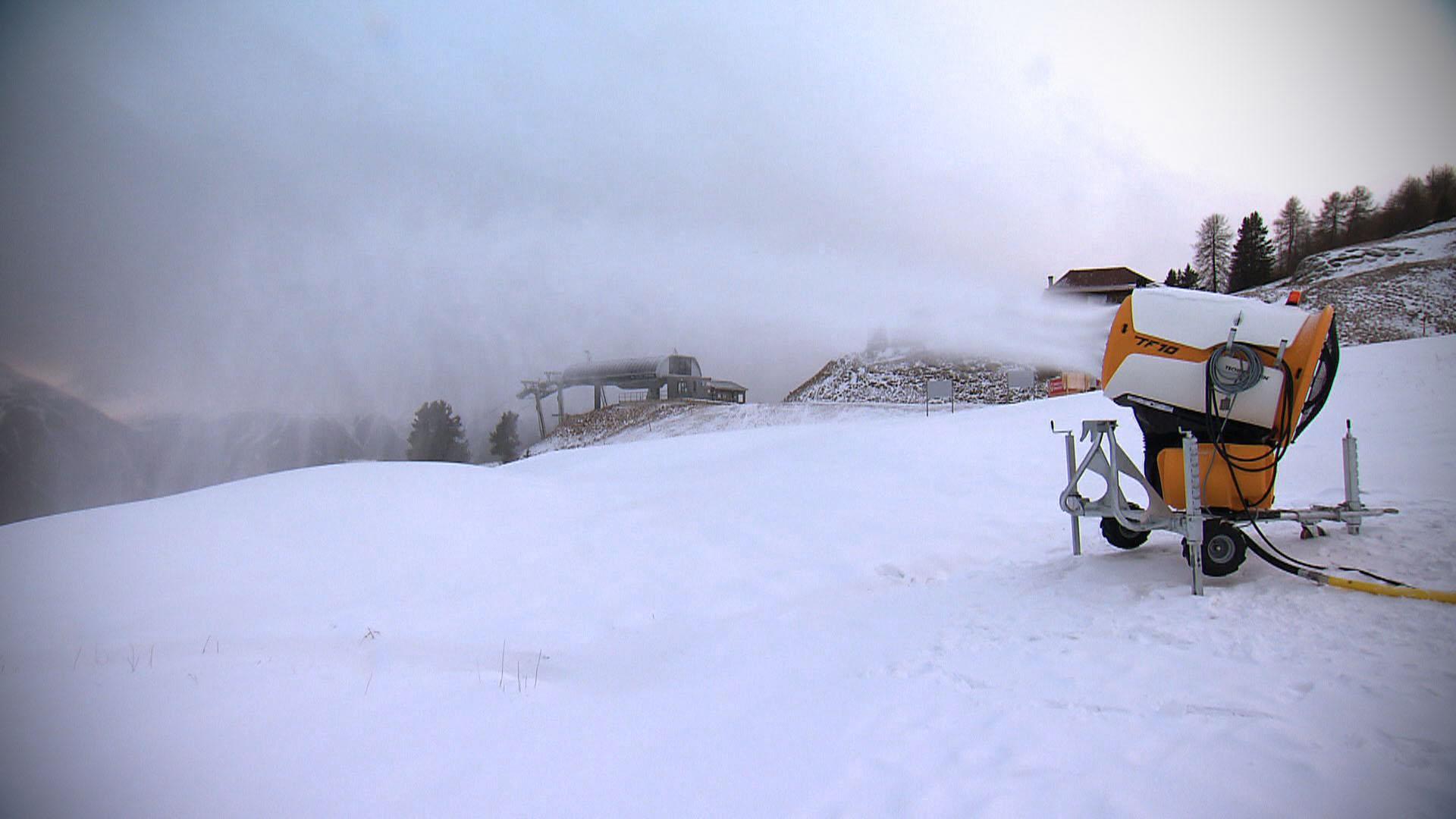
More
Fake snow use highlights water usage
The amount of water used is not the only factor, warns Martine Rebetez, a climatologist at the University of Neuchâtel and the Swiss Federal Institute for Forest, Snow and Landscape Research (WSL). The different needs of the different users of the terrain and the impact on natural, agricultural and human systems must also be taken into account.
In Switzerland, barring a few exceptions, we are lucky to have rainfall all year round and not to have to resolve disputes over water use, Rebetez explains on the online media outlet Heidi.newsExternal link. “In drier regions, the situation is different,” she says.
What other effects are there on the environment?
The water pipes for the snow cannon present another problem, Rebetez says, as they are embedded in the ground. The digging and laying work contribute to soil erosion. It also disrupts waterways and water sources downstream.
The chemical additives needed to boost snow formation at higher temperatures also have a harmful effect on plant and animal life. Some countries, such as Austria and France, have banned their use. In Switzerland, additives are authorised under strict conditions in some cantons. But they are practically no longer used, according to the Cableways Association of Switzerland.
Finally, there is the question of electricity consumption. It takes one to three kilowatt-hours of energy to produce one cubic metre of artificial snow. To put that figure into context, one kilowatt hour is roughly the power used by a television set left on for seven hours.
The International Alpine Commission for the Protection of the Alps has calculated that 600 gigawatt-hours would be needed to produce snow for the entire Alpine region. This corresponds to the annual electricity needs of 130,000 four-person households.
Thanks to technological progress, artificial snow systems now consume about 30% less electricity than they did 15 years ago. Some installations even work without electricity.
(Translated from Italian by Julia Bassam)
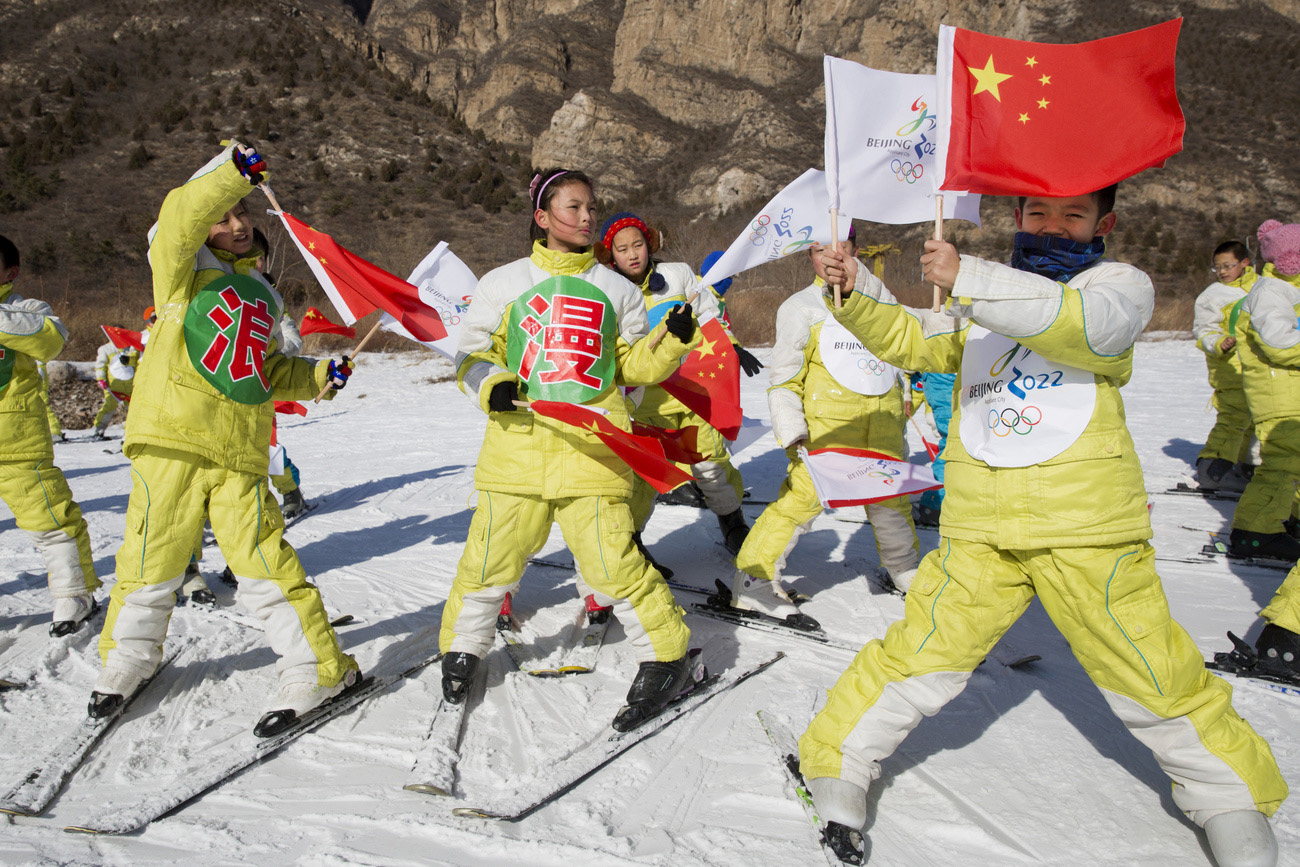
More
How Switzerland and China caught the skiing bug

In compliance with the JTI standards
More: SWI swissinfo.ch certified by the Journalism Trust Initiative










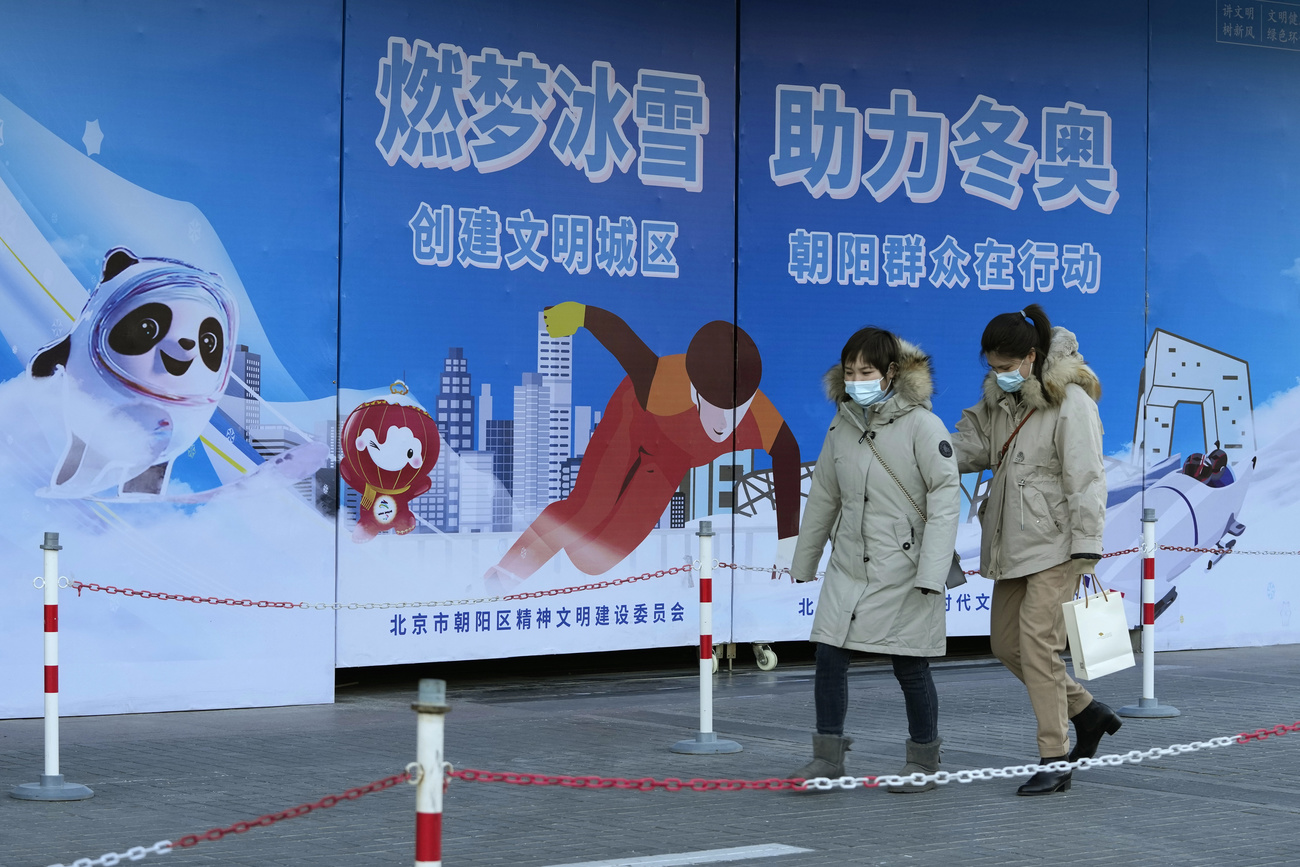
Join the conversation!